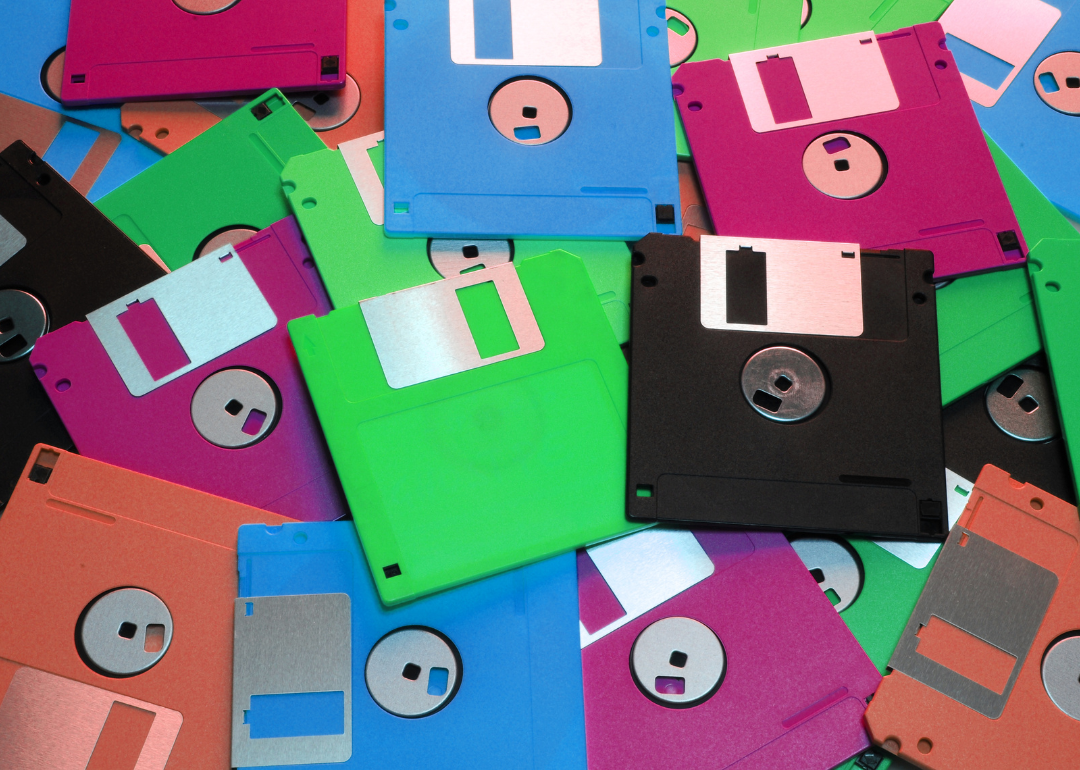How computing technology has evolved in the classroom

Canva
How computing technology has evolved in the classroom
Students working on laptops in an elementary school classroom.
For many middle and high school students, the COVID-19 pandemic marked a major departure from the models of education they had been accustomed to for most of their lives. Instead of interacting with their peers and engaging with their teachers, eating lunch together in the cafeteria, and perhaps going to band practice or art class, they attended school within the confines of their homes, seeing the faces of their friends in small thumbnails on Zoom.
It would have been difficult for most people just decades—or even only a few years—ago to imagine that remote learning could so rapidly and completely take the place of traditional in-person schooling. While the sentiment behind the adage “necessity is the mother of invention” certainly holds true in the case of the pandemic, the technological innovations that made everything from video conferencing to online learning management systems possible have been in the works for decades.
Just as remote learning represented a major shift in how educators, students, and parents alike conceptualized school, the advent of technology like pocket calculators, personal computers, and the World Wide Web similarly blew open entrenched ways of teaching and learning, allowing for more ease and exploration in the classroom. More quickly than initial reluctance or suspicion of technology would lead many to expect, new innovations become assimilated into what students perceive as the norm.
While not without its challenges and setbacks, computing technology has opened the door to different styles of learning and greater educational accessibility. To trace how technology used in classrooms has changed over the past six decades, EDsmart consulted a variety of news, education, and technology industry sources and highlighted some of the most influential innovations.
![]()

Canva
1970s: Floppy disks enter the scene
An assortment of brightly colored floppy disks on a table.
The ’70s brought several crucial technological innovations to classrooms and beyond, including the first pocket-sized LED calculators. Prior to 1970, calculators were large, tabletop machines that cost roughly $1,000. In 1971, the HANDY calculator entered the market, boasting a handheld size, an LED display, and a nearly $400 price tag—the equivalent of nearly $3,000 today. Despite its inaccessible price point, the calculator paved the way for smaller and cheaper models in the following years, changing how people engaged with math inside and outside the classroom.
The 1970s also saw the advent of word processors, a massive leap forward from typewriters that enabled people to keep a record of their writings separate from physical copies. This was made possible largely through the invention of floppy disks in the early 70s, capable of storing between 80 and 100 written pages—a massive departure from previous storage media, which could only hold about one page.
The first iteration of Apple computers debuted in the mid-’70s. Steve “Woz” Wozniak created the prototype for the Apple-1 computer in 1975, revolutionizing how computers looked with its built-in keyboard and television screen monitor. The Apple-1 began selling in 1976 after Wozniak partnered with Steve Jobs.

Monkey Business Images // Shutterstock
1980s: Personal computers establish themselves in schools
Elementary-aged students working on an old computer in their classroom.
While personal computers began entering the market in the 1970s, they didn’t take off until IBM introduced its own version in 1981. Businesses began buying PCs en masse, and schools began investing hundreds of millions of dollars in computers and software. Soon after IBM’s PC debut, other companies began producing similar models, offering more choice—and better prices—to consumers. Companies like IBM marketed directly to schools by asserting the role of computers in the future of children’s education.
Part of this marketing was through the development of school-specific software like typing programs, math and logic games, and spelling and reading activities. Even software specializing in things like SAT prep began making its way into classrooms. The ’80s also saw the emergence of the first graphing calculators, which could handle complex mathematical computations and visualize them.

Canva
1990s: The World Wide Web is born
A cursor hovering over the text “www.” in a computer’s internet search bar.
The World Wide Web was launched in 1991 by Tim Berners-Lee, a member of the European Organization for Nuclear Research, catapulting the world into the internet age. Although the internet was technically invented in the 1980s, the advent of the web made the internet accessible to everyone and revolutionized information sharing. By 1996, the year Google started, 2 million websites already existed.
The online learning management system WebCT also emerged in the ’90s, introducing people to new modes of learning and laying the groundwork for the widespread adoption of virtual courses. WebCT allowed teachers to create centralized virtual spaces with notes, readings, and assignments for the first time.

Canva
2000s: Web 2.0 changes the information landscape
The home page of Wikipedia.
Following the creation of online learning management systems like WebCT, the 2000s saw the emergence of Massive Open Online Courses, or MOOCs, which expanded the notion of virtual learning from a class of 20 students to an international cohort of several thousand learners. MOOCs made some courses taught at universities available to those not enrolled at the institution, often for free or for a relatively low fee. MOOCs would later expand to become organized platforms that showcased partnerships between universities, like edX.
In addition, the next iteration of the World Wide Web—Web 2.0—emerged in the 2000s, allowing for interactivity between internet users and webpages, rather than a more static viewing experience. Web 2.0 gave rise to social networking sites, as well as more communal, democratized hubs for information, like Wikipedia, subverting traditional knowledge structures. This era marked a seismic shift in the ways students gathered and shared information, as well as how educators conceived of their roles.

Canva
2010s: Digital learning becomes more enmeshed in the classroom
An elementary-aged student using an iPad in class.
The first iPad debuted in 2010 and rapidly became an integral part of many classrooms and teaching models. Able to function simultaneously as a textbook, a note-taking device with highlighting and annotating abilities, and a portable computer, the iPad and other tablets that followed it were embraced by schools as a tool to engage students in interactive learning. Studies of whether the devices were more engaging than distracting to students yielded mixed results, with both positive and negative educational effects reported.
Online tutorials and educational resources like Khan Academy also emerged, giving students more access to help with specific math, science, and computer science topics. Learning coding and other computer science-related subjects in schools became far more ubiquitous during the 2010s, as the skill set has demonstrated itself to be increasingly valuable.

Canva
2020s: The pandemic makes virtual learning a necessity
A student on their laptop attending virtual class.
With the start of the COVID-19 pandemic coinciding with the beginning of the decade, technology has proven to be even more integral to education than ever before. As lockdowns kept students from kindergarten through college at home, remote learning through video conferencing platforms like Zoom as well as learning management systems such as Canvas became a vital part of remote learning. According to Census Bureau data, almost 93% of households with school-age children said those children participated in some type of online learning.
Not all children had equal access to digital educational resources, however. Large socioeconomic disparities in access became apparent between high-income and low-income households. Higher-income households were far more likely to have access to online learning resources, while lower-income households were more likely to use paper resources and materials given out by schools.
The future of computing technology in the classroom, including the role of artificial intelligence, has been a topic of much speculation—both optimistic and mistrustful—in the wake of new advancements like ChatGPT. Some preliminary studies point to the potential of AI in streamlining testing and creating more personalized learning and assessments for individual student needs. At the same time, many educators and parents have expressed concerns about students using AI to cheat or get out of doing work, as well as its ability to exacerbate already-existing inequities. Only time will tell what role AI and other evolving technologies will play in classrooms over the next decade.
This story originally appeared on EDsmart and was produced and
distributed in partnership with Stacker Studio.
